(first posted 5/22/2014) For those of you who associate the traditional American car of the 1970s with tinsel and filigree, I present this Chevrolet Bel Air wagon. It is both the largest and most basic expression of GM’s biggest-ever full-size line-up and as a 1975, one of the last Bel Airs made for the US market.
Having traveled 69,000 miles over thirty-nine years, this big, black behemoth is a survivor aside from its paint job. And with its rare, extreme base specification, there are few cars like it left today. It doesn’t even have air conditioning. Might someone near the end of their driving career ordered it brand new? Or was it a government fleet vehicle?
Bel Air sedans were available with a six-cylinder paired to either a three-on-the-tree until 1973 or Powerglide until 1972. Wagons were mercifully not paired to anything less than a 400 four-barrel V8 backed by a Turbohydramatic, but as a small block, with the extra displacement mostly coming from a larger bore, it sure looks tiny in that engine bay.
Nevertheless, I really like the ’71-’76 B and C bodies. The wagons, particularly, are gigantic with a lot of glass. The wraparound rear windows give it a much more modern look than the boxes which replaced them and in black, it looks great with dog-dish hubcaps and plain, painted flanks. It’s impossible not to be reminded of the era’s freshly-released jumbo jets or of a glassy airport terminal. Even with the choked engines under the hood, the impression of heft, strength and capacity is undeniable, and in this most basic model, the illusion isn’t tempered by any effete trim.
Even the most basic models were given a foldaway rear window and tailgate. I’m not sure if this is a manual or power tailgate, but not having to wait for motors to complete the job of moving those large panels into place seems like a greater luxury. As much as I’m bowled over by the standard fitment of a retractable fifth door, most people went with the other whopper of the era, the Ford LTD wagon. They must’ve known something GM did not.
The Bel Air continued until 1981 in Canada, where more people could be convinced to buy an vinyl-lined room on wheels. The institutional vibe of this wagon had limited appeal, and this Bel Air couldn’t be more different than the 1986 LeSabre that was yesterday’s headliner. People at the lower end of the market didn’t want capacity as much as they wanted economy and when it came to full-sizers, more feature content was expected. If towing wasn’t a regular chore, I can easily see this being replaced by a base level Plymouth Voyager. That, of course, is a familiar story.
In the case of either the Plymouth or this Chevy, this sort of very basic specification is rare. From this angle, with all the doors open, the mismatching mirrors are evident, as well as the full-width bright trim around the windows which doesn’t appear original. Like the ’73 LeSabre JP Cavanaugh posted, it appears that at some point, someone didn’t like how the frames looked originally, but it’s a tasteful modification which works well with the black paint, dog dishes and white wall tires. All it needs is a enthusiastic new owner to keep it pretty; which savvy Swede will the lucky one who scoops this up?











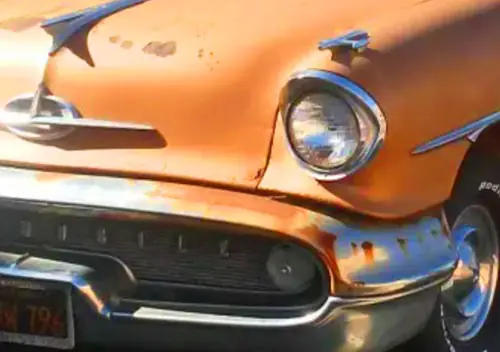
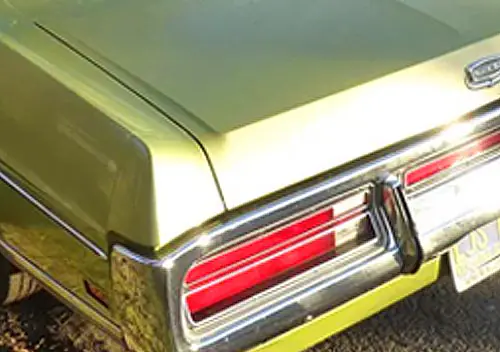
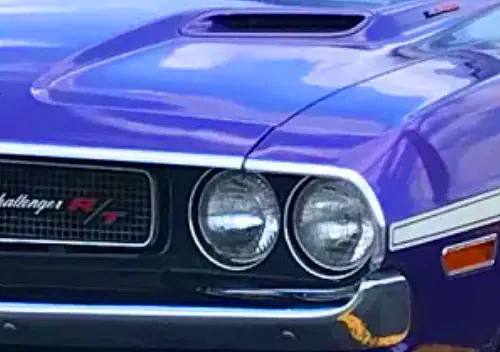

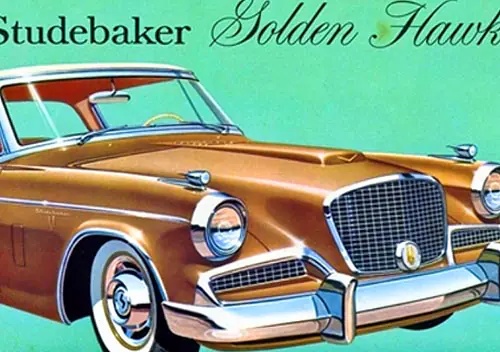
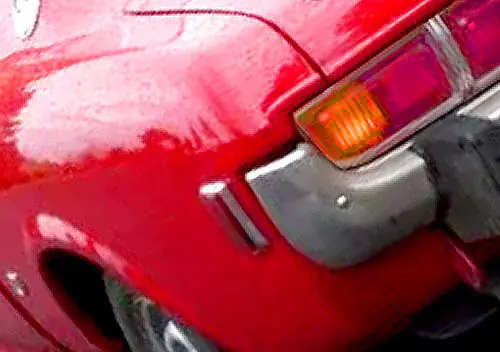
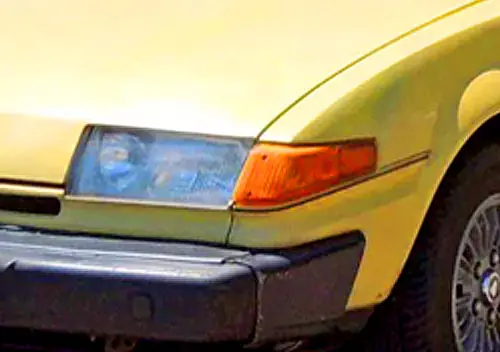
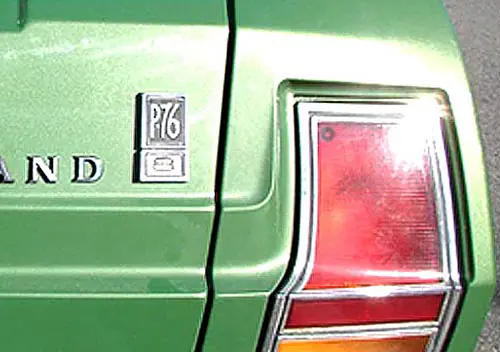
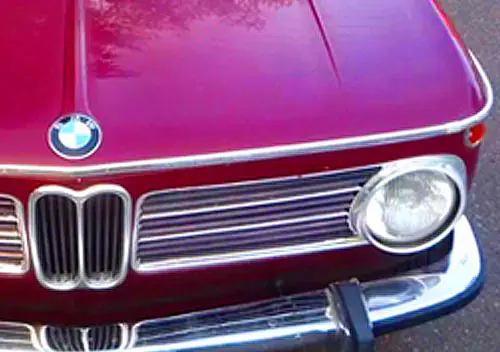
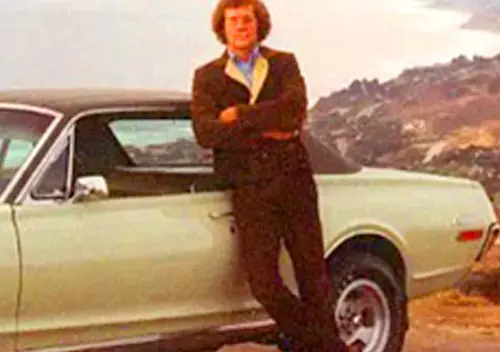
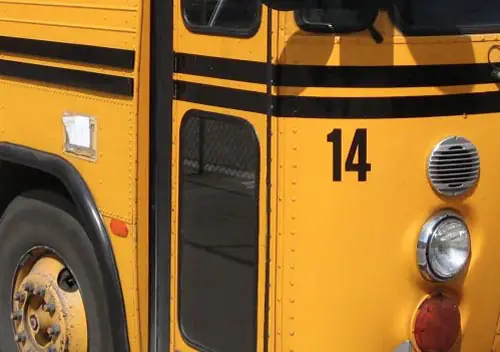
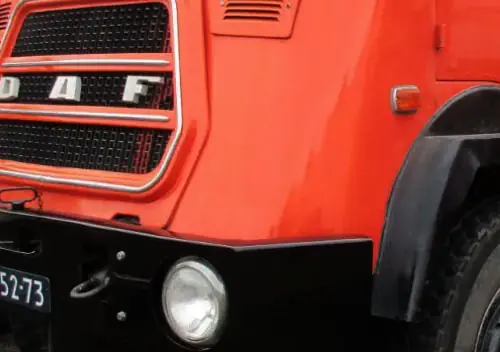
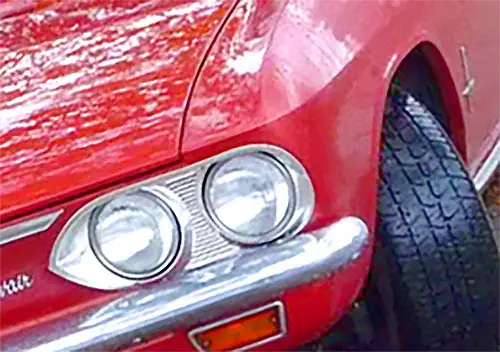
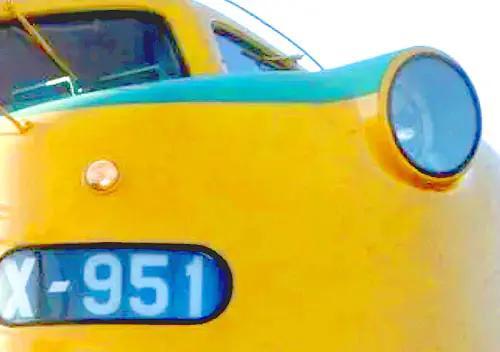
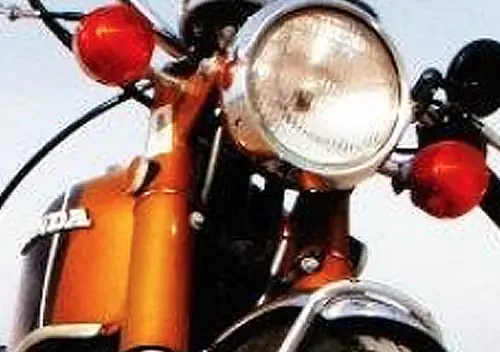
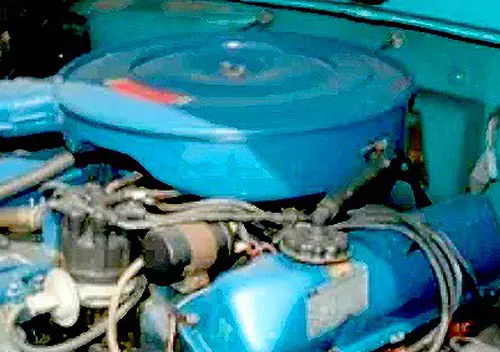
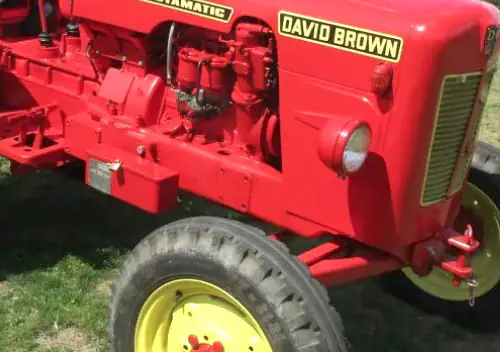
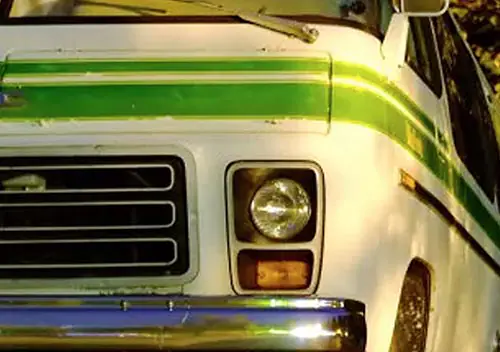

I think that’s super cool, actually.
No airconditioning?
Can it be retrofitted and how much would that cost?
1. Yes, and 2. It doesn’t matter; it’d be worth it. All the glass on here reminds me of our JD 8300 tractor. A big tractor with a bigger cab and a lot more glass than the smaller 7000 series we also have. The A/C blows cold, but with all that glass, it struggles to keep up sometimes. The situation is the same here: all glass cab=A/C is always worth it, regardless of price.
My AC doesn’t have A/C either. (c:
That’s a Dad-level joke right there. Doubly so since my Dad actually remembers when AC was still around.
So I doubt if it was a government car. Seeing that our tax dollars were being used, there was no way the government would force its poor employees to put up with summer heat. Like the way a lot of us taxpayers did.
When I worked for the government in the mid 70s, the fleet cars were primarily poorly equipped AMC Rebels purchased because some senator from Wisconsin insisted that they were a great value. Some even came with propane fueled engines (just try to find propane at 5 PM when you’re 100 miles from the home office). Most of these had NO A/C or if they did, it didn’t work due to AMC’s stellar quality reputation. They ALL had vinyl bench seats which made the heat more enjoyable.
>>When I worked for the government in the mid 70s, the fleet cars were primarily poorly equipped AMC Rebels purchased because some senator from Wisconsin insisted that they were a great value.<<
Bill Proxmire (of Golden Fleece Award fame), no doubt!
The reason usually stated why the government bought AMC’s and Chrysler products is that the govm’t didn’t want to be accused of maked the biggest manufacturer bigger.
And they were just that!
A typical anti-government canard that needs refuting. It does get tiresome. As a Federal government employee in the ’70’s my usual ride was a stripper, non-A/C Maverick. It did have automatic transmission though – oh the extravagance! The first government vehicle with A/C that I can recall was a late ’70’s AMC Hornet. I think it came standard. There were no options. Not even a radio.
The auto was (probably) only so they wouldn’t have to worry about employees not knowing how to drive it.
Not far from the truth. I remember that back then (early ’70’s) the federal government issued government drivers licenses to those who drove govt. vehicles. There was even a drivers test where some HR type took you out for a drive around the block. I also had a valid state license, but I have no idea if you needed one to drive a govt. vehicle. This practice stopped by 1978.
The federal government agency I worked for buys dozens of Chevy Expresses. They could have saved a bit of money by not getting power locks, power windows, the fancy radio, and going with the Savana, but since they buy dozen or so at a time they get a discount. Plus, it is also what is rolling down the line in Wentzville.
One also needs to consider resale. The GSA disposes of most vehicles at pretty good times so ordering options such as this likely pays dividends later on.
I would also wager Uncle Sam buys hundreds at a time.
That is why USFS vehicles are no longer Mint Green. A number of Government vehicles are beat up when they are retired, but not all of them and the level of abuse varies.
The thing is I think most of those things have become standard equipment over the last several years, so that might be as basic as those vans come, at least in the passenger versions. There really aren’t any “strippers” anymore. Almost everything has pw, pdl and a CD player.
We don’t know where this car was originally sold, but in cold-climate parts of the country in 1975, air conditioning was far from universal in cars in this price bracket — it would not have been that unusual for a car to not have it.
At the Nissan dealer people who bought stripper 4 cylinder stick (not even a radio) Frontier’s would inquire on hot August days. Dealer cost to have an AC shop install (no kits available from Nissan) was $2500.00 in 2008.
truly a behemoth.. 1968 was the last year we saw the full sized Chevrolet in NZ, the first year of the 307 cube engine too.. my own favorite locally assembled Chevrolet was the ’67 Impala 4 door 283 (the only engine available to local purchasers) in black with a blue interior.. lovely cruisers that were popular with wealthy farmers with big families.. the Holden Statesman 350 took over after that as the largest GM vehicle in this country
Only as prepaid orders cars for the showroom evaporated in 66 one reason my Dads mob took on Holden they couldnt get new Chevs untill the SouthAfrican Statesman turned up and suddenly so did those wealthy cockies who wouldnt touch a Holden V8 with a Barge pole.
If they came with the 350, they still wouldn’t need to touch a Holden V8!
Aussie built the Chev 350 Statemans but didnt get them to buy but they were a Holden but with all Chevrolet running gear quite popular here but few survive.
This would be *very* tempting were I in the market.
This is the car (ours was red woodgrain black vinyl no options) that I came home from the hospital in 72. Imagine black vinyl with no air living in the mid atlantic. hot humid summers. We towed a small trailer, packed it to the gills etc. But cars didnt last back then, by 1978 it was unreliable and rusty. I recall it overheated a lot and blew head gaskets….now looking back, I cant imagine why. Regardless we bought a stripped 78 suburban which lasted 10 rusty years. And still no radio!
What a cool car and the bloated 71-76 body style looks best on the wagons. Too bad it was repainted, oh well.
Try explaining BIG, cheap cars to younger people today. I was one of six growing up in the sixties and seventies. Big cheap wagons like this were the way to move big families around back then. Have you ever tried to put six teenagers and mom and dad in a minivan?
But notice how most of the full-size models from this era, wagons included, got more “Broughamified” into the late 60s and 70s. Wagons were often the most expensive models in a given range, priced higher than the 4-door hardtops. Most people wanted ’em loaded up. If vinyl roofs and opera lights were available for the Custom Cruiser and Estate Wagon, people probably would have gone for it.
That’s what makes a full-size stripper model wagon so strange and cool. Mercury fielded an entry level full-size wagon in the 70s, but I think it wasn’t called “Colony Park”. No woodgrain, no power accessories. I can’t find any pics online right now but I know I’ve seen one before.
The base model Mercury full size wagon was called the “Commuter.”
Vinyl tops actually were available on these clamshell wagons, I have one on my Buick.
Cool, can you post a picture?
Here’s one from a car show several years back.
Later base full size Mercury wagons were just called the “Marquis wagon”, until 1982. Maybe after 1974? I know for sure the Panthers never used ‘Commuter’ tag.
Man! That thing looks like a Pacer hearse from the rear. And dead bodies don’t need no stinkin’ air conditioning! 😉
Reminds me. Those interior door panels are in very good condition too. I remember seeing in the late 80’s to early 90’s that 1970’s plastic GM car interior door panels like these that were turning into dust when you handled them. Seriously! They would flake off little by little. Must have been very cheap plastic. The cars were the Monza, Nova and Monte Carlo. All from before 1976.
+1 for “Pacer Hearse”.
The hearse remark applies. As an apprentice mechanic I did some work on one of these wagons, converted to hearse duties.
Converted to RHD, silver in colour. That disappearing tailgate impressed a naive
19 year old. I thought a power tailgate window was the heights on a wagon!
Wow! What a great find. This has got to be the only one of these not already crushed.
I can count the number of 1971-75 Bel Airs that I’ve seen over the past 20 years here in Massachusetts on one hand, and I have no memory of ever having seen a ’75 Bel Air wagon.
Ditto, on seeing a Bel Air wagon. It’s quite possible that I did back in its day, without really noticing it, but not in anything resembling modern history. An extremely rare car.
I just took this picture. So there are at least two left.
Whoa! What a find. By just, you mean…? The CC effect at work again?
Well, wait a couple of months, and let’s have a genuine Bel Air wagon CC!
Cool! I’ll trade my Civic for it.
I was looking at it when I posted the picture. I was just happy to find a Chevy of this vintage. The rest was pure gravy.
The edition of the Standard Catalog that I have doesn’t provide a production figure for the 1975 Bel Air wagon, just an overall total for all full-size Chevrolet wagons (about 58K); bear in mind that this was the bottoming-out point of the recession touched off by the 1973 oil crisis, when sales of full-size cars were at their lowest point of the ’70s. Assuming that Bel Airs represented roughly the same percentage of wagon sales as they did of non-wagon sales, there would have been about 2,000-3,000 Bel Air wagons built.
I wouldn’t be surprised if Bel Airs actually represented a smaller percentage of wagons than they did of non-wagons, though, in which case production may have been even lower than that. Does anyone have another reference book they can check?
Is this car for sale and do you know what size engine? Back in the 70’s the Mass. State police purchased new 1975 Chevy wagons with the 454 big block…They were used on the Mass. Turnpike and were also equiped with strechers and first aid equipment….Thank you!
Tim
Or derbied.
So weirdly awesome, this loss leader version of a model that was usually a pretty luxurious whale.
Regarding the last “3-on-the-tree-B-body” has anyone ever spotted one in captivity? I love those kind of rare oddities.
There was a 1973 straight 6 Bel-Air sedan with the 3 on the tree on ebay several years ago, it was similar to this wagon too, black with a gray interior. I might have a picture saved on the computer somewhere, but I have seen such a mythical creature. There couldn’t have been that many made.
It’s odd that GM even made a 3 speed manual for the B body as late as the early 70s. They must have lost money on each one. Was it a loss leader to justify a low, low MSRP that was pure fiction?
I’d love to drive a beast like that, just to see what it was like.
They still even had a Powerglide available in 71-72. I can’t imagine that there were many takers for either. But they still did, I don’t know when the other low-priced 3 stopped offering a 3 OTT in their big cars. Chevrolet still offered a 3OTT on the Chevelle until 1977 and on the Nova until 1979.
Pontiac was still offering a three on the tree for the B-body until mid-year of either ’71 or ’72. I was researching this the other night, and my source even had breakdown by model and number of “Synchromesh” for each.
May need to do an article on that.
Really, Pontiac still offered a 3OTT in the new bodystyle cars? I thought Chevy was the only holdout. Buick still cataloged a 3 speed manual as the base transmission for the LeSabre and Wildcat for 1969. I think automatics became standard for 1970.
The Olds Delta 88 could be had with a three on the tree until mid year 1971 also.
Stay tuned for more on that topic.
I hope we can use the “SPECIAL” sound effect….
That would be derived from “Call To Danger,” by Mort Stevens and his Orchestra. Apparently there was a Hawaii Five-O soundtrack with a bunch of instrumentals like that. That Special graphic is deeply wound into my chid brain. I downloaded Call To Danger years ago and it’s still in my heavy rotation playlist on my iPhone.
I’ve said this elsewhere, and it’s of only passing relevance to the topic at hand, but I’ll say it again:
Last year for Ford’s 3OTT in pickups was 1987, first year of the new F-150 bodystyle. I thought it was ’86, but apparently a few base-model ’87s with the 300 had it.
Last year for GM’s 3OTT in pickups was also 1987, last year of the “square-body” style.
Last year for Dodge’s 3OTT in pickups was (guess what) 1987, last year of the Slant-Six.
Each company’s respective van also probably dropped the 3OTT at the same time, given how much was shared between platforms.
I know when it ended for trucks, we were discussing more when it stared disappearing from full size domestic cars.
Some other discussion here, a poster pointed out that after the fall 1970 UAW strike, B-O-P made THM standard on all their 1971 big cars. So only a tiny few 3OTT [Catalina, LeSabre, 88] could have been built before the strike.
Great find. The black really shows off the styling, particularly the sweep of that futuramic curved rear window.
I am generally no fan of GM B bodies of this generation, but I kind of like this one. I am a sucker for dog dish hubcaps with whitewalls, too. 🙂
That clamshell tailgate is probably manual. I knew someone with a 73 version with the manual gate. As I recall it, both the lower gate and the upper window had some kind of spring tension that helped balance them with gravity. I believe that both the window and the gate would lock into place at full open and a turn of the key latch would release them in order to either open or close them. Can’t have been common, as it was the only manual version I ever remember seeing.
That black car with no air in Illinois must be really uncomfortable – I think GM was routing fresh air through or next to the Heater box by then, so the vent would probably be blowing hot air at you once the engine was warmed up. One of my pet peeves on most cars built since the mid 1970s.
It’s not a total stripper. Here’s another shot from the Ebay listing showing not only the window and tailgate switches, but also an AM radio…..
Oooh – I see a knob for a kick panel vent down there too! This picture also shows that someone who took such wonderful care of this car – even that person couldn’t keep the rubber knob on the end of the shift lever.
This one looks like it has the full power clamshell tailgate. Our ’71 Custom Cruiser had the standard configuration; glass was power, but the bottom would drop down about a couple of inches and you pushed it the rest of the way down. Surprised that this Bel Air wagon has a color keyed steering wheel and steering column as I recall seeing some period Impalas/Caprices with a black steering wheel and column.
I think they went to color keyed pieces for ’74.
BR is right about the power gate. It was an expensive option on a base level car. It was even optional on the ’72 Buick my parents’ bought.
You can tell manual gates from power by the surround around the key. Power gates would have a flush surrount becuse the only thing the key operates is an electrical switch. Manual gates have “wings” around the key so your fingers can get some leverage because you had to unlatch the gate against some pretty strong spring pressure.
What buyers discovered was that damage done to the lower tailgate would prevent it from retracting. The retracting backlight caused people’s backs and cargo to get wet in the rain. It wasn’t an issue with the more upright designs from Ford, AMC and Mopar.
The window was always electric on these, no matter how base the car was, the tailgate could be manual or electric, since this one doesn’t have the handle to pull up the tailgate on the chrome strip, that would indicate that it was electric. Also the exterior tailgate key on manual gate cars has “ears” like a contemporary GM ignition cylinder, the ears were there to give you a little more “leverage” when you manually unlocked the sprung manual gate.
What an awesome find! And yes, aftermarket AC a must in order to use and enjoy, at least here in sticky, hot Florida (the black paint ain’t helping I tell ya!). And I always loved the ’71-’76 full-size Chevys, and the ’71-’78 Fords, probably because those were my ‘wonder years’. But I must say, those clamshell tailgates never made sense to me, even as ten year old; Ford’s 3-way was more practical and looked better. The clamshells do deserve a special mention in automotive history for their uniqueness; and probably a ‘deadly sin’ asterisk!
I wouldn’t be surprised if a Swede actually did buy this….
I like this car ! .
Back in the 1950’s & 1960’s base model full size wagons were *very* popular and sold plenty .
I missed a clean , $400 1971 9 passenger Bel Air wagon with a 250 CID I6 by minutes , dammit .
I always wondered who the hell ordered all those black vinyl interiors on non AC equipped cars .
-Nate
By the mid-1970s, the basic full-size wagons were quite rare where we lived.
For that matter, the base versions of any full-size car were rarely seen.
People who wanted a full-size car generally bought the top-of-the-line, well-optioned version. This seemed to be especially true of the wagon buyers. Wagons were the SUV/crossovers of the day, and just as plenty of people now want Lexus, Infiniti, Cadillac and Benz crossovers, so did many people want Custom Cruisers, Colony Parks, Town and Countrys and Country Squires.
Buyers looking for barebones transportation generally bought a domestic compact sedan.
As you mentioned , it matters greatly where you lived ~ the Movie Studios used 9 passenger wagons for shuffling crews ’round well into the late 1970’s .
Southern and Mid – Western folks also bought more stripper 6 cylinder cars than you imagine , I guess you had to be there to understand ~ wagons were worked to death by big Families , each successive owner a little poorer and less able/interested in taking any sort of routine care of it .
Look at old movies or newsreels and you’ll always see wagons , lots and lots of wagons .
Georgia , Miss. etc. all sold boat loads of stripper Camaros with I6’s in them too , along with the ubiquitous I6 pickup trucks ~ when dead or nearly so , the decent looking ones were shipped out of state and got V8 transplants and cheap paint jobs to hit the market as low cost flash cars on the ‘ other ‘ side of the racks so to speak .
I worked on sh*tloads of these cars all through the late 1970’s and 1980’s .
-Nate
Long before they became the symbol of middle class Baby Boom suburbia, big wagons (including those of the “Low-Priced Three”) were the daily drivers of the very rich. A teenager growing up wealthy in the ’50s and ’60s was just as likely if not more so to end up with Mom’s hand-me-down wagon instead of a new car upon reaching driving age.
There’s a reason the Brits refer to wagons of all sorts as “estate cars”.
With minimal chrome accents, etc., it looks considerably better. Never a fan of this era in American cars, but I really like this. Clean.
The basic styling of the car really does the talking.
Not fancy enough to be a hearse, but maybe it was a funeral home first-call car?
I was waiting for somebody to make that suggestion.
I’ve always enjoyed American station wagons. They’re big enough to seat a family of nine people and/or luggage to wherever they’re going. The only thing I’ve never liked about GM station wagons is that the instrument cluster doesn’t have all the necessary gauges. Except for the speedometer and the fuel gauge, it’s mostly warning lights which don’t tell you anything about what’s going on.
In the early sixties my parents had a chevy wagon very similar to this, but it was the Biscayne, with inline 6, 3 speed manual with overdrive, and plastic (pure, not some xxxhyde) seats.
We had a 1960 Ford wagon – cheapest available. Green with a white roof, 292, 3 spd stick, no radio, rubber floor covering, vinyl seats. Not sure if white roof and V-8 were options or standard but if options they were the only ones the car had.
Our Biscayne’s seats may have been vinyl, but they looked like plastic, not faux leather, and were kind of hard. My 71 Riviera had naughahyde seats that looked a lot like leather and were more comfortable.
70s road trip memory……the thrill of the rear facing seat looking out the back window at all the trucks screaming right up to our bumper because my dad drove sooooooooooooo slow!
The rear seats in these faced forward, though. I don’t think they could fit the footwell and the lower half of the clamshell in the same general area. Or, if this is a 2 seat version, there would be a Texas-sized storage bin under the floor.
hmmmmm must check my memory. I could have sworn it was a caprice or impala wagon. Maybe it was fwd facing. I do remember green with wood paneling.
Every time I see one of these I am required to whine about letting my 77 Impala Wagon 350/350 get away. Thanks. Now I feel better.
Yikes, big, black car, lots of glass, no A/C, and not even tinted glass? Bet that interior gets toasty in the summer.
And I’ve read that the disappearing tailgate, motorized or not, had a propensity for getting hung-up in the open position and it was a struggle to get it closed when that happened. Pretty easy to understand why Ford’s much simpler dual-action tailgate was a better deal.
I’ve never seen one of these and am even a little surprised that the Bel Air name was used. For some reason I had thought the elaborate wagon-naming system for the full-size wagons that was introduced for 1969 – Kingswood Estate, Kingswood, Townsman, Brookwood, in descending order of prestige – had persisted through the whole clamshell era, or at least through 1971-73.
Nope, the Chevy sedan series names were brought back in 1973, maybe to compete with Ford better?
I never liked the Kingswood, etc, names.
Base station wagons do have this “institutional” look to them, this car wouldn’t look out of place with a “Mental Health Department” or “State Hospital for Criminally Insane” logo on the door, or it looks like a vehicle that would serve as a hearse for prison funerals. Looks like something Donald Pleasance would use to chase Mike Myers.
Coupe d’el Loco.
HAHA, haven’t seen that movie in a while.
“I got it…I got it…I got it…”
“Brophy, get it later.”
“What a dramatic airport!t”
Well, Mike Myers in his LTD wagon wouldn’t stand a change, then, would he?
“Institutional look”. Made me recall my 2nd car, in 11th grade (1980). A 1971 Fury I (not the II, III, or Gran) wagon. A bare bones POS bought for $300 from a buddy, who got it from his Dad, who picked it up from the state DOT auction. Painted white, but originally light blue, with poverty caps and the police package. It still had the original spare that had “police [special?]) imprinted and a 140 mph speedo. It had the 318 with a 2.74 gear. Slow off the line and horrible city mpg’s; but the highest speed I ever drove at 123mph in the rain and 20mpg highway. That car taught me how to drift! Didn’t get many girls with it, however.
Up until the mid 70’s there were still a few buyers who did not want A/C, to save money. They were the Depression era adults and they were used to no frills. Learned to drive in Model T’s and bought the bare bones Biscaynes, BelAirs, Fury 1’s, and Custom 500’s.
’75 was last year for BelAir wagon and by then was mostly used for Police Canine patrol. For ’76, Impala was base wagon, but it was trimed as such, not stripped out.
There was an Impala S for mostly fleets available after the Bel-Air nameplate was dropped in 1976, I don’t know what the interior trim was like, I’ve never seen one.
1976 Impala S was sedan only and was virtually a ‘BelAir’. For ’77, Impala was base, but somewhat better equipped compared to a ’72 Biscayne
“Up until the mid 70′s there were still a few buyers who did not want A/C, to save money.”
Or, as I used to hear it, “Just one more damned thing to go wrong.”
They could also mention the significant MPG penalty A/C exacted in those days.
“The Bel Air continued until 1981 in Canada, where more people could be convinced to buy an vinyl-lined room on wheels.”
People could be convinced to buy them in the U.S., too, but they were called Impalas here.
1975 was the final year in Canada of the Biscayne. I spotted on Flickr, this picture of a 1975 Canadian Biscayne https://www.flickr.com/photos/20798543@N07/6490107685/
The roof rack on this BelAir was optional, so it’s not too stripped bare.
Looks like you stumbled onto a Canadian car by mistake. It should be sent back up north, where only we can truly appreciate all that understated luxury and a AM radio to boot!
Also, no need for AC up here for 3/4 of the year!
Reminds me of my 76 Buick Estate Wagon. Very few options, no AC or power options or woodgrain. It was from Vermont, very rusty and sadly long gone.
It does have an understated elegance to it… and looks better in wagon form than sedan, etc. But then there are very few wagons I don’t like… I remember visiting the Tarrytown, NY plant (school field trip) when these beasties were being assembled. I think I was the only one who really enjoyed it…
That is so cool! I guess that’s all I have to say…
So tell me Mr Klockau, is it bigger then a Towncar?
Oh yeah…at least compared to a 2000 TC! 🙂
…and certainly way bigger than the other kind of 2000 TC:
My parents had a 72 Kingswood wagon, metallic pea green with beige interior. I remember that each interior door panel had a small wood grain patch with a chrome emblem in the center. The drivers door had the Impala emblem and the rest of the doors had a fleur de lis emblem. No doubt some of that fine GM attention to detail on the assembly line. The 307 2bbl got nine miles to the gallon. Pretty much the car that turned my parents away from Chevy to Buick and finally to Hondas. My memories of that car are a little better. It was the car I learned to drive in, passed my drivers test in and got laid for the first time in. The best POS Chevy I ever drove.
What a find! I can’t imagine the series of circumstances that allowed this car to survive 39 years while most of it’s other stable mates were turned into demo derby fodder or Chinese refrigerators or Korean microwaves…
My dad had this car but in caprice trim with a 454 in the early 80’s. He used it as a work vehicle and claims that he could watch the gas needle drop going up Floyd Hill here in the Colorado rockies. great car!
I like the authors association with the Jumbo Jet, if there ever was a jumbo jet styled car, its these clamshells, they even have a hump in the top, like the 747. They also have similar fuel millage too. The great big “tomorrowland” rear windows predicting the groovy Nixon era future of Supersonic passenger planes and 25ft long 800 cubic inch Eldorados there were to come.
Could this be the second-most steeply raked rear window on a wagon, following whichever Audi model it was?
The 1983-1991 Typ44 Avant (100/200/5000).
There was a 75 Kingswood for sale over here at a good price, but I just couldn’t look past the bumpers and front clip. Another great post, Perry.
The clamshell was GM trying to out-do Ford, who were the sales ‘Wagonmasters’. Ford had a strong rep for station wagons, and outsold Chevy’s.
GM went radical with the new fangled tailgate, it wowed people at Auto Shows, but then cargo area was limited. But, it seemed [to me] that by 1976, GM’s biggies were selling kind of OK, and when the more sensible 77’s came out, they were a hit. [Until Gas Crisis 2]
Looks awesome! I’m not really that into the ’71-’76 Chevy B-bodies, but the clamshell tailgate is ridiculously cool and makes the wagon their best body style by far. The only way I could imagine a big Chevrolet of this vintage being cooler is if this exact car was ordered as a sleeper rather than a stripper – factory 454, A/C, heavy duty everything, power windows/locks, nicer interior, etc. I guarantee no one actually ordered a car that way because… well, I’m not sure why. That’s what I would’ve done!
That sure is a narrow cargo area for such an enormous beast.
Love the gleaming black paint with the dog dish caps and painted steelies. Looks purposeful and just a little mean, and really flatters the lines of the car. Opposite end of the spectrum from a loaded ’72 Kingswood I spotted last year.
Back in the late 70s in Brooklyn, NY, there was a local taxi/car service that had dark blue `75Bel Air station wagons, the three seat version with tan vinyl interiors and air conditioning.They were kept very clean and they ran great. I used to use this service a few nights a week when I had to work late, and it was always a pleasure to get an air conditioned one on a hot July or August night.
.
Not only no a/c, no tinted glass!
This really says something about GM brand equity. In 1957, the Bel Air was the premier Chevrolet. 210s and 150s were for people who couldn’t or didn’t buy the best! Less than twenty years later, I had no idea the Bel Air was still a model, let alone the phone company model. One of my best friends in high school had a tired hand-me-down 1978 or 1979 Impala wagon, and by that time everyone assumed it was a Caprice, the Impala name having fallen through the cracks by 1986. What else could you buy in 1975? Well, a Honda Civic is a Honda Civic 45 years later. So is a Toyota Corolla or Land Cruiser. Ford F150 anyone? The long-time nameplates GM still makes have gone from big players to niche products.
Brand drift happens the other way with one nameplate per line than it did with one nameplate per trim level. In 1975 the Honda Civic was a tiny car, today it’s medium-sized.
I still say the black color of this car points to either a second-tier funeral duty or a “Plain” religious background on the part of the original ownership. It just feels like it “should” be pale blue or harvest gold, black was an unusual color in the mid-70s unless you were going full-Brougham or full screaming chicken, and if it’s a repaint it’s a really top-notch one, no mismatched doorjambs.
Black would have been pretty much a special order colour here, the sort that doesn’t appear in the colour chart but is mentioned in the fine print down the bottom of the page, as “also available” which I mentally translate as “If you really insist…”
In my experience, apart from some taxi companies it was only elderly folk who had a black car then.
Painting a car black properly involved a level of quality that Detroit had no interest in during the ’70s. Mopar’s black cars were showered with extra prep and panel fit attention during the ’60s, but I can’t imagine GM doing that for anything other than a Cadillac.
Agreed. This seems like some sort of special order fleet car. I mean, black, non-tinted glass, and no A/C? That would be one toasty ride in the summer that most civilians wouldn’t be interested in and no one would want to drive unless they were getting paid to do so.
126 comments in I hope I have something original here.
An attempt at production numbers; from the Standard Catalog, there were approximately 350,000 standard Chevrolets produced for 1975. About 58,000 were wagons, leaving 292,000 non wagons. There were about 13,000 Bel-Air sedans produced, about 4% of non wagon styles. If the Bel-Air trim were also about 4% of wagons, there would have been approximately 2,320 Bel-Air wagons in 1975.
The full apparently chrome trim on the passenger door window frames is something I’ve never seen on any ’71-’76 GM full-size. The low trim cars normally had plain painted frames, and the higher trim cars used a thin inner edge chrome trim.
I have a feeling the chrome trim was added by an owner somewhere along the line, a lot of work for an old base fleet car. Maybe a JC Whitney option back in the day for big GM cars? In any event, it really dresses up the car and makes it look different from any GM sedan or wagon I’ve seen from this era.
Here are Impala wagons without and with the normal GM window frame trim from the era….
I inherited a 1972 Townsman (Belair spec) wagon much like this. Dark green paint, tan vinyl seats, 350/TH400, AM radio and no A/C. Absolutely broiling in a New York summer. Unstoppable in snow though with all that weight in the rear. Tire pressures were 22 psi in front and 32 in the rear so very tail-heavy. I had to drill a hole in the under-floor storage compartment to let water drain out as that clamshell window leaked.
A local funeral parlour has one of these Chevy wagons doing hearse duty its a pale green metallic colour and in immaculate condition, big car plenty of room for a box in the back.
This was like the first new car that my father bought. A brown 1972 Chevy Kingswood wagon. It was my mother’s car and I drove it in high school. I once had 25 high school friends in that car. It’s amazing how many friends you get when you get a car in high school. The rear springs rusted towards the end of its life. And it was swilling gas. It actually only lasted until 1980. But gas prices were insane at that time. My mother replaced it with a Chevette, bur that is a story for another day.
Back in the early 90’s, my uncle bought two cars from an army surplus auction. First was an olive drab75 Valiant and the other a light green 78 Concord. Both were really low mileage cars, unfortunately the body and floor pretty well gone on the Valiant. The one thing that struck me as odd with both-no optiions except auto trans and A/C.
Fred Crismon called out those Valiants in his book US Military Wheeled Vehicles. They had no rustproofing and were shoddily finished all around. Quite the come down from the indestructible WWII and M-37 3/4 ton trucks.
I remember a guy selling used government fleet cars in the late 70’s / early 80’s. Mostly Mopar B-body sedans and postal jeeps. Many of them repainted (poorly) in garish colors – house paint, from the looks of it. One of my classmates picked up a powder blue Jeep Dispatcher.
I don’t believe a manual clam shell tailgate and window were available. They were all power regardless of model. I couldn’t imagine trying to operate that heavy mass manually.
They were also a son of a gun if involved in a rear end collision. They were the dickens to try to get lined back up and sealed where they wouldn’t leak.
All the windows were powered. But you could get a manual tailgate, and on some base models it was standard. My friends had one It was well counterbalanced, but still a heft.
Thank you Robert. Never knew that. saw was powered. even the base models. Was it done by lowering / raising the lower gate and the glass followed on it’s own?.